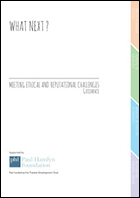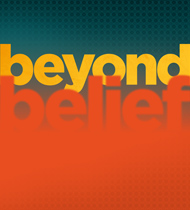Julia Farrington: Tackling self-censorship in the arts community
Julia Farrington, associate arts producer, Index on Censorship, participated in the Theatre UK 2016 conference on 12 May 2016. This is an adapted version of her presentation.
In January 2013 I organised a conference called Taking the Offensive for Index on Censorship, in partnership with the Free Word Centre and Southbank Centre. The conference was held to debate the growth of self-censorship in contemporary culture, the social, political and legal challenges to artistic freedom of expression and the sources of these new challenges.
The report from the conference concluded that censorship and self-censorship are significant influences in the arts, creating a complex picture of the different ways society controls expression. Institutional self-censorship, which many acknowledged suppresses creativity and ideas, was openly discussed for the first time.
Lack of understanding and knowledge about rights and responsibilities relating to freedom of expression, worries about legal action, police intervention and loss of funding, health and safety regulations, concern about provoking negative media and social media reaction, and public protests are all causing cultural institutions to be overly cautious.
One speaker at Taking the Offensive suggested that we are fostering a culture where “art is not for debate, controversy and disagreement, but it is to please”.
There is above all, unequal access to exercising the right to artistic freedom of expression, with artists from black and minority ethnic encountering additional obstacles.
Many felt that far greater trust, transparency and honesty about the challenges being faced need to be developed across the sector; dilemmas should be recast as a necessary part of the creative process, to be shared and openly discussed, rather than something to keep behind closed doors. This will make it possible for organisations to come together when there is a crisis, rather than standing back and withholding support: “if we collectively don’t feel confident about the dilemmas we face how can we move on with the public?”
I think there have been significant changes in the three years since the conference and, whilst I think the same challenges persist, there have been some really positive moves to tackle self-censorship within the sector. The growth of What Next? has created precisely the platform to debate and discuss the pressures, dilemmas and controversies that the conference identified. What Next? has produced guidance on navigating some of these issues and is developing more resources on how organisations can support each other when work is contested.
Index on Censorship responded to the clear call from the conference for the need for guidance about legal rights and responsibilities if we are to create a space where artists are free to take on complex issues that may be disturbing, divisive, shocking or offensive.
We have published information packs around five areas of law that impact on what is sayable in the arts: Public Order, Race and Religion, Counter Terrorism, Child Protection and Obscene Publications. They are available on the website under our campaign Art and Offence. These have been well received by the sector and read by CPS and police and we are developing a programme of training which will, if all goes well, include working with senior police officers.
At the same time, pressures from outside the sector have intensified.
The role of the police in managing the public space when controversial art leads to protest has come into sharp relief over the past two-three years where they have repeatedly “advised” venues to remove or cancel work that has caused protest or may cause protest.
I did a case study on the policing of the picket of Exhibit B at the Barbican in London which is available on the Index website; and in the same year, the Israeli hip hop opera the City was closed in Edinburgh on the advice of the police.
More worryingly the police “advice” has also led to the foreclosing of work that is potentially inflammatory – as in Isis Threaten Sylvannia an art installation by Mimsy, that was removed from an exhibition called Passion for Freedom from the Mall Gallery last year.
With the removal of Isis Threaten Sylvania, we see a shift from the police advising closure following protest to the police contributing indirectly or directly to the decision to remove work to avoid protest.
In this case freedom of expression was actually given a price — set at £7,200 per day for the five days of the exhibition — the price set by the police for their services to guarantee public safety.
The police took the view that a perfectly legal piece of art, which had already been displayed without incident earlier in the year, was inflammatory. And in the balance of things as they stand, this opinion outweighs:
- the right of the artist to express him or herself;
- the organisation’s right to present provocative political art;
- the audience’s right to view it;
- and those that protest against it, the right to say how much they hate it, including when that means that they want the art removed.
This new chapter in the policing of controversial art sets alarm bells ringing and represents a very dangerous precedent for foreclosing any work that the police don’t approve of.
But going against police advice is problematic.
In Index’s information pack on Public Order we asked our legal adviser, working pro bono, questions that many artists and arts managers are concerned about:
What happens if police advise you not to continue with presenting a piece of work because they have unspecified concerns about public safety – and yet tell you it is your choice and they can only advise you?
The artist would in principle be free to continue with the work. It would be advisable, however, to ensure that the reasons held by the police were understood. It may also be prudent to take professional advice…
And then what responsibilities for safety do employers have to staff and the public in relation to continuing with an artwork that has been contested by the police?
An organisation also has duties to their employees and members of the public on their premises. These duties may extend to making an organisation liable in the event of injury to a person resulting from the unlawful act of a third party if, for example, that unlawful act was plainly foreseeable – in other words the police have given their warning.
What are the options for an arts organisation to challenge police advice at the time of the protest itself?
If the organisation believes that it has grounds to challenge police directions to avoid a breach of the peace, it can seek to take legal action on an urgent basis. Realistically…legal action will not be determined until some time later and until it is determined by the courts, the organisation and/or its members or employees would risk arrest if they do not comply with police directions.
So – what starts out as police advice which implies genuine choice, on closer inspection transforms into a Hobson’s Choice where failure to follow that advice could lead to arrest.
On this evidence, both self-censorship and direct censorship are the undesirable outcomes of this as yet unchallenged area of policing.
But the Crown Prosecution Service has read and approved the packs and our law packs are in the system with the police.
The ideal policing scenario is to keep the space open for both the challenging political art and the protest it provokes. Both are about freedom of expression, what we have to avoid is the heckler’s veto prevailing.
Going back to other recent examples of censorship — questions remain about the role of the police in the decision to cancel Homegrown the National Youth Theatre production of a play about the radicalisation of young Muslims by writer Omar El-Khairy and director Nadia Latif. This was followed earlier this year by the presentation, without incident, of Another World: Losing our Children to Islamic State at the National Theatre, play on similar themes by Gillian Slovo and Nicolas Kent.
I mention Another World because it is important to state the obvious, that all the work that has been contested by the police and been cancelled, relates to work about race and religion and the majority of artists involved in work that has been foreclosed are from black and minority ethnic communities.
Looking through the lens of freedom of expression, each case of censorship gives a valuable opportunity to view a specific snapshot of relationships within society and to analyse the power dynamics operating there, both directly around the censored work — whose voices are and aren’t being heard in the work itself, and in the field and context in which the work is taking place and again looking at who is in control, who decides what voices are heard. I don’t have time here to go into an analysis of each case, but what emerges is that freedom of expression is, as it stands, a biased affair in the UK and I believe will remain so while our society and our culture are not equal.
As well as these new cases of censorship that we have seen since the 2013 conference, we have also seen new government policy, legislation and regulations which place increasingly explicit controls on what we can say and have a chilling effect on many areas of expression and communication, and interaction with government.
Many campaigners and charities see the Criminal Justice and Courts Act 2015 as designed to deter charities from intervening in judicial reviews — the most important legal channel we have to call authorities to account; the Investigatory Powers Bill, better known as the Snoopers’ Charter gives the surveillance state more powers; the Prevent Strategy requires us to police each other – surveillance and policing our neighbours — two nasty authoritarian tactics, and most recently the anti-advocacy clause would effectively ban organisations from using government funds for lobbying — stifling dissent. It was due to come into law on 1 May but the consultation period was extended and it might be kicked into the long grass.
The government has made it clear that it wants us to see ourselves predominantly if not exclusively as businesses and in response we have successfully made the case that the arts contribute massively to the economy.
But we know we are so much more. The arts are a vital, at best magnificent and effective player in civil society — especially when you define civil society as “a community of citizens linked by common interests and collective activity”.
With our core values and freedoms under attack, the arts and other civil society bodies are responding. The discussion about the role of the artist in taking on the big issues in society — from climate change to the refugee crisis — has, from where I stand, definitely intensified and gone up the agenda over the past three years, both here and internationally, as the pressure on our freedoms and values also intensifies domestically and internationally.
To fully participate in society and to create art that calls power to account, we need to continue to identify, analyse and tackle the causes of self-censorship within the sector, and stand together to enter into dialogue with the various agents of control that we identify in the process.
Art can help us imagine and bring about a more equal and just future.




